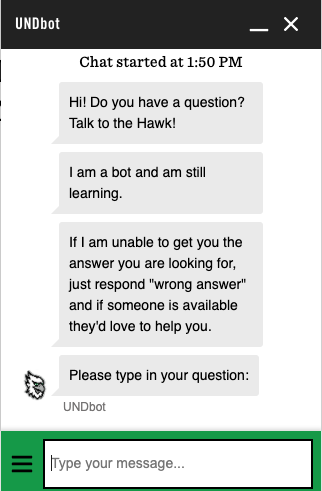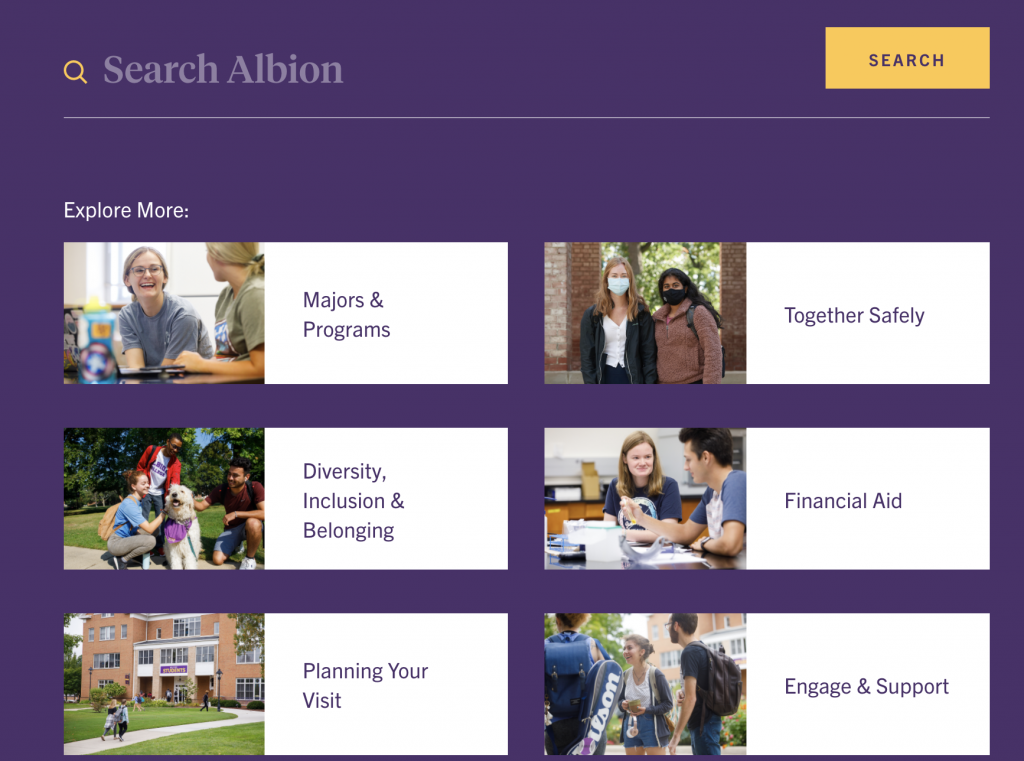In 2021, experience design is your brand.
Good on you if you responded, “Our website.” Your site was more important than ever in shaping impressions of your institution among some of the people you most want to influence and move to action. Do you think their behavior is going to change now that we’re moving out of the pandemic and a more normal life is returning to campus?
As a digital-first creative agency, it’s mStoner’s job to design, develop, and deploy a modern, accessible, user-friendly website that turns heads and gets results. Regardless of the state of a client’s visual style guide or messaging platform, one fact remains: With a new website, an institution has the opportunity to create a wholly new brand experience for prospective and current students, families, alumni, and others.
Let’s be clear about what that means: You have the power to change their perceptions of your institution. How? By paying close attention to experience design. The ease at which visitors can find what they came for, the feeling they get from reading a great story, the feedback they get as they interact with the user interface, the more personalized the content becomes as the site learns more about their needs — this is experience design. In 2021, experience design is your brand.
As a creative agency with more than two decades of experience employing marketing strategy, design, and technology to create powerful experiences, our goal is to take your brand to the next level with the art and science of experience design.
The Art of Experience Design
Of course, if it were that easy, everyone would be doing it. So where do you start?
There are three primary ways to begin thinking about and implementing better experience design on your website:
- Make every touchpoint personal: What do each of your prospective website visitors really care about? What do you have to offer them?
- Focus on improving your best experiences: Forget the competition and do what you do better than anyone else. Use design to make everything you do more user-friendly: Make design more than mere decoration so it becomes a tool for building trust.
Any experience worth its salt starts with trust. As an institution selling a future version of the self, your brand needs confidence. You need to know what you’re talking about, for sure. But you also need warmth, strength of character, honesty, and authenticity to build real and lasting connections with prospective audiences. You must know what they need from you and present them with an experience that is both familiar and delightfully unexpected. It’s a fine balance!
Start with a clear understanding of your audiences. While there are a variety of methods for understanding the needs of your audiences — from experience-map workshops to analytics data — the art of designing great experiences is to offer what is emotionally satisfying. A transformational story, a friendly chat conversation, and a funny how-to video are all great examples of experiences that can lift people up and provide them with important information. These experiences, when designed with intention, reinforce your brand and build trust. They should be constructed with the same level of quality and care that has been given to your visual identity.
There are a growing number of tools that can ensure that just about any visitor to your website can have a very personal experience — or at least an experience that seems personal to them. Some sites have been very successful in doing this without using any fancy technology. (And let’s face it: Some tech comes with a cringe-inducing creepiness.) How do you do this? By paying careful attention to what people want and need from different areas of your site and fine-tuning it over time so that it delivers.
That’s the legacy approach and, despite all the new tech, it’s still vital in creating a great user experience. Of course, today there are tools that can make this experience even better. Tools such as chatbots, like the “Talk to the Hawk” feature at the University of North Dakota, help gather information so institutions can suggest academic programs, clubs, and activities to site visitors. Other ways you can create a great user experience include:
- Personalizing content based on how someone moves through your site and the search terms they use.
- Personalized marketing landing pages and emails based on Requests for Information.
- Using program wizards like the School of Advanced International Studies at Johns Hopkins University and Mendoza College of Business

University of North Dakota chatbot,
“Talk to the Hawk”
It’s important to recognize that experience design evolves over time: You should regularly analyze, test, and refine your site. We’ve been advocating for this approach to your website generally for years, but today it’s more important than it ever has been. Right now, great user experience is a competitive advantage; in a few years, it will be table stakes.
The Science
It’s important to take an artful approach to experience design, but that doesn’t preclude paying close attention to the enormous contribution that smart analytics can make in designing and perfecting experience on your website.
- Use A/B testing to inform your design approach from the beginning of the design process.
- Use ongoing analysis of how visitors interact with your site to evolve the user experience. (For example, looking at the top searches on your site. This provides another way to adjust links based on how people are using the site without changing up the standard and expected higher ed navigation. Put this into practice in your search panel—such as the one on Albion College’s newly redesigned site.)
- Ensure that the knowledge you gain from ongoing user experience design is captured in the refinement of personas and analytics for institutional marketing purposes.

Albion College search panel
In this context, analytics doesn’t have much to do with how many people visit your site; that’s important to know. What’s more important is paying close attention to what people do. Ongoing moderated user testing that observes how people use the site in real-time and how their faces change when interacting with your site provides valuable insights. Make sure to ask users’ questions and pay attention to how they verbalize their thought process. It may sound like a big investment, but one session that’s five or 10 minutes long makes a difference if you know what to look for. Knowing how they use your on-site search, what they click on and whether their clicks lead them deeper into the site or cause them to leave it, knowing what content they interact with and what they pass by: All these are clues about how you can make their experience on your .edu even better.
Not only do great experiences lead to viral marketing, but UX research focuses on identifying the target users’ wants and needs — which in turn can help in the measurement and improvement of UX. The two fields then meet when it comes to specific techniques that help achieve their respective objectives, such as the use of personas, analytics, and competitor analysis.
And if you’re already using technology to support a highly personalized user experience, deeper analytics will help you to refine your personalization strategies and content.
The Art and The Science
Today, user experience design is marketing gold.
Think about experience design as the next significant evolution of branding. When I worked on campus as a creative director, we wanted to ensure that consumers would respond to the institution’s brand emotionally wherever they saw it. Now we need to think about creating emotional resonance and engagement wherever they experience it.
Most people will have that first experience on an institution’s website, which is why it’s so important to get that experience right. But institutions that are intent on being ahead of the competition will realize that the experience they’ve created on their website needs to be replicated IRL for the institution, too. That’s the challenge and opportunity: to build an integrated and truly authentic brand. The ultimate goal of experience design is to integrate the digital and analog worlds by unifying services, refining and deplying business practices, and creating enthusiastic brand ambassadors. If your institution is already ahead of the curve in collaborating across business units and living its brand on campus and in its community, kudos to you! Then the process is reversed: Your website needs to live up to your community’s expectations.
What’s missing from your brand guide? Download our checklist and ensure your institution’s brand connects with your community.